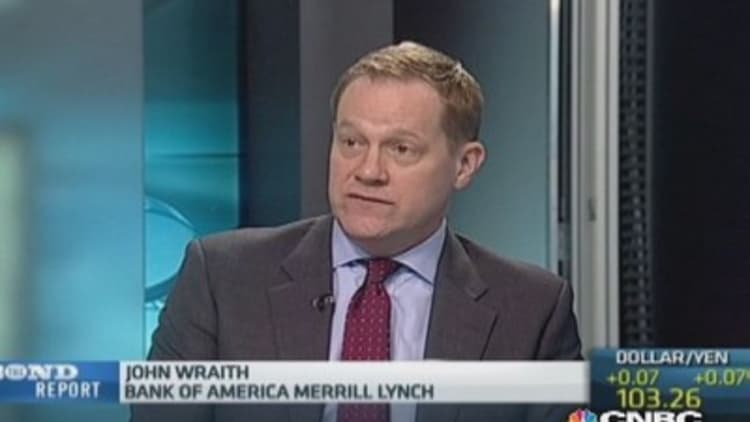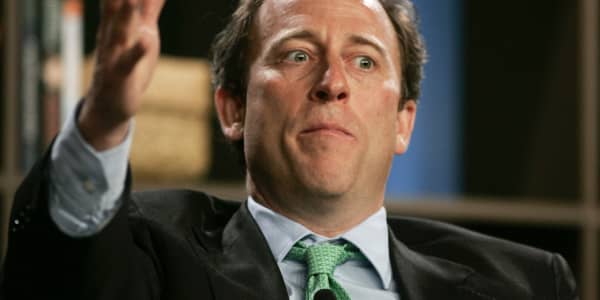With last year's bond market selloff fresh on the minds of Americans and interest rates likely to climb, bonds have become a bitter pill for many investors.
"Investors feel like they don't need to be in bonds right now because the stock market has been good and bonds have underperformed," said certified financial planner Kent Grealish, of Grealish Investment Counseling.
Like other advisors, Grealish said he reminds clients who are tempted to bail out of bonds exactly why diversification matters — at the risk of stating the obvious. "Diversification is the equivalent of diet and exercise," Grealish said. "It is a little boring, sometimes a bit painful, and it can take a while to see any results."
But it works, he added, by dampening volatility.
Read MoreInvestors yield to bonds' charms
Many investors are rightfully nervous about the outlook for the fixed-income market in light of the strong possibility that interest rates will trend higher as the Federal Reserve continues to taper its massive bond-buying program. Interest rates and the prices of bonds generally move in opposite directions — when interest rates rise, bond prices fall, and vice versa.
While investors ought to remain diversified, they shouldn't be complacent, advisors say. Here's what some planners have to say about navigating today's fixed-income market:
Know your investment timeline. Investors who have plenty of time to recover from dips in the bond market shouldn't let volatility derail their long-range plans, said Peter Ashby, a certified financial planner and founder of Adams Ashby Financial Advisors.
But retirees and those approaching retirement would do well to limit their exposure to interest-rate risk. In general, long-term bond funds have more interest-rate risk than short-term bond funds do.
To evaluate a bond portfolio, consider its duration, a numerical indication of how much the price of a bond investment will likely fluctuate when interest rates change. The higher a bond fund's duration, the more rate-sensitive it is.
"While you can never eliminate risk, you can minimize it," Ashby said. "If you have a short time horizon or an active investment strategy, you might consider decreasing the duration of your fixed-income portfolio."

Individual bonds for the faint of heart. Some investors just can't stomach the idea of possibly losing principal in a bond fund, no matter how much time they have to meet their long-range goals, advisors say. Such investors might sleep better at night if they own individual government bonds or investment-grade corporate bonds, provided they are committed to holding such bonds to maturity.
Of course, there are potential pitfalls with this strategy. Among other issues, investors who buy and hold individual bonds in the current environment are locking up their money at today's low rates. As rates rise, they may miss the opportunity to put money into higher-yielding bonds.
Always consider credit quality. Some advisors caution investors against seeking higher yields by investing in junk-bond funds, which hold bonds issued by companies with credit ratings that are below investment grade.
Grealish said high-yield bonds tend to perform much like stocks, reducing their effectiveness when it comes to dampening portfolio volatility. Investors, he added, have become somewhat complacent about the risks associated with junk bonds, because of the low level of defaults in recent years.
Strong investor demand for high-yield bonds has contributed to low default rates by making it relatively easy for issuers to refinance their debt, Grealish noted.
Read MoreSteps to deal with rising rates
"Default rates have fallen not because these companies are better structured, but because there are more than enough people willing to buy these bonds right now," he said. "That will come back to bite us at some point."
In light of the still-paltry rates on high-quality bonds, the strengthening economic recovery and uncertainty surrounding interest rates, other advisors favor broadly diversified, high-yield bond funds with low durations. Certified financial planner Stephan Quinn Cassaday said his firm has put clients into funds that own a broad array of high-yield bonds with very short maturities.
If you spread your risk, you can minimize your losses and get gains in places where you least expected them.Peter Ashbyfounder, Adams Ashby Financial Advisors
"As rates rise, we have money coming due at regular intervals," said Cassaday, president and chief executive officer of Cassaday & Co. "We get a reasonable return on the funds and have the cash to roll over into higher-yielding securities as rates rise."
The U.S. economic recovery, added Cassaday, is likely to be broader and deeper than many anticipate, which bodes well for issuers of lower-quality debt.
"The ability of these companies to pay back debt and pay interest will get better as the economic environment continues to improve," he said.
Read MoreBonds still a safe bet? It depends
Higher rates may be inevitable, but that doesn't make them imminent. The Federal Reserve may halt or slow its so-called taper if the recovery stalls. What's more, a major stock market correction could send billions flowing back into bond funds and Treasurys, pushing up prices and driving down yields as a result. Indeed, the growing crisis in Ukraine has unsettled investors around the world, jolting stock exchanges and producing a so-called flight-to-quality.
"If you bet in one direction and you are wrong, that can be painful," noted Ashby at Adams Ashby Financial Advisors. "But if you spread your risk, you can minimize your losses and get gains in places where you least expected them."




